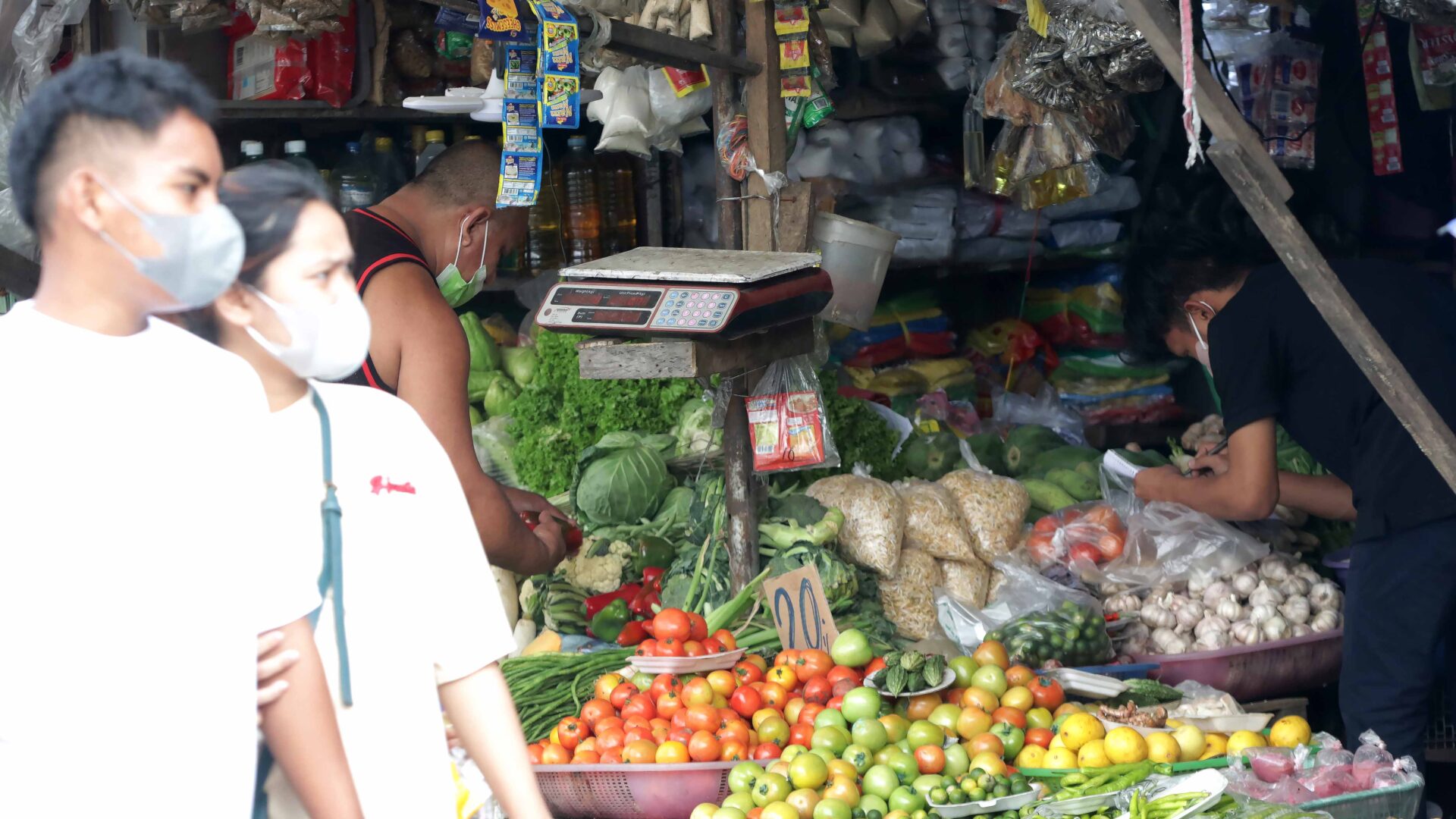The government has committed to ensuring food security and affordability to fight inflation while reducing transport and logistics costs to protect consumers, National Economic and Development Authority (NEDA) Secretary Arsenio Balisacan said on Friday.
Balisacan cited a Philippine Statistics Authority (PSA) report that the country’s inflation rate for July increased to 6.4 percent, which is at the upper end of the Bangko Sentral ng Pilipinas’ (BSP) forecast range of 5.6 percent to 6.4 percent for the month.
“In our near-term socioeconomic agenda, we want to ensure that there’s sufficient and healthy food on the table of every Filipino. We are also helping reduce energy, transport, and logistics costs, especially for vulnerable sectors of our population,” Balisacan said.
“It is our urgent priority to ease price pressures and protect the public’s purchasing power through the implementation of programs that will help Filipinos cope with the effects of higher inflation rate,” he added.
The July figure is the highest recorded inflation since October 2018 (6.9 percent), according to the PSA.
“With this month’s inflation, the Philippines’ average inflation from January to July 2022 stood at 4.7 percent. In July 2021, inflation rate was lower at 3.7 percent,” PSA Undersecretary Dennis Mapa said in a press briefing.
Moreover, Mapa added that the main source of the upward trend of the July 2022 inflation was the higher annual growth rate in the index for food and non-alcoholic beverages at 6.9 percent, from 6.0 percent in the previous month.
The transport index followed with 18.1 percent annual growth, from 17.1 percent in June 2022.
“For food, particularly in fish, chicken, bread (loaf) and sugar (lower production). For transport, in jeepney (fare hike),” Mapa added.
Inflation remains well above the BSP upper bound target of 4 percent, which should keep BSP hawkish in the coming months. BSP Governor Felipe Medalla, signaled that rate hikes are in the pipeline and we continue to pencil in a 50 basis points (bps) rate increase at the 18 August policy meeting, Mapa said.
Hawkish slant
Medalla remains optimistic that inflation is close to the peak but BSP will likely retain their hawkish slant until inflation heads closer to 4 percent.
In a related development, the Department of Budget Management, has approved the P4.1-billion second tranche of the Targeted Cash Transfer Program. This will help over four million Filipino families, who belong to the poorest of the country’s population, to cushion the effects of the rise in prices.
Inflation in July 2022 was driven by broad-based acceleration across commodity groups, especially in food and non-alcoholic beverages at 6.9 percent. This is because of the faster inflation of meat, fish, rice, corn and fruits.
“To boost local food production, the government will continue to support the agriculture sector through lower input costs, development of new farming technologies, extension of financial assistance to farmers, and strengthening the agricultural value chain,” Balisacan said.
“Plant, Plant, Plant”
These can be achieved through the “Plant, Plant, Plant” Program 2, the government’s P24-billion flagship program on food security, which provides subsidy and support to the agriculture sector, the Cabinet official said.
“The inflation rate of Transport, one of the main inflation drivers, increased to 18.1 percent in July 2022. This was mainly due to the nationwide provisional increase in PUJ (public utility jeepney) fares,” he said.
Thus, given that oil prices remain elevated, the government will fast-track the distribution of the second tranche of subsidies for PUJ drivers and operators.
For his part, Jun Neri, lead economist of the Bank of the Philippine Islands said that “inflation continued its uptrend, driven by elevated food prices and the rapid depreciation of the peso for most of July.”
“Food prices increased at a faster rate as supply constraints and increasing logistics costs continued to affect food products. The items with the biggest increase in prices for the month are corn, meat, fish, oils and sugar. Transport costs have also gone up given the recently approved P2.0 increase in jeepney fare nationwide,” Neri added.
Meanwhile, the reduction in Meralco’s electricity rates and lower global oil prices have tempered some of the mentioned price pressures, he said.
